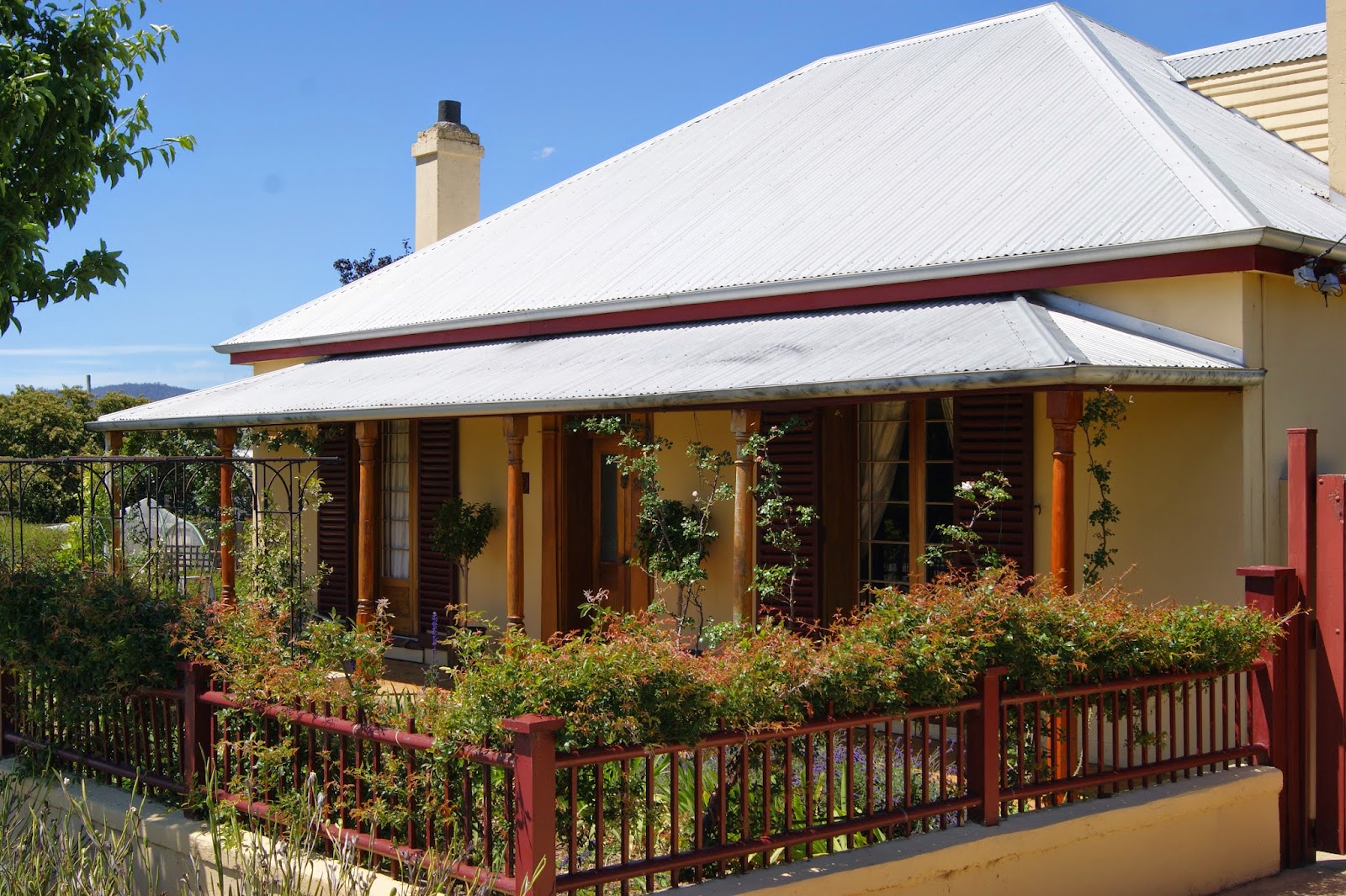Sorell is one of the oldest settlements in Tasmania. When Governor Macquarie named the town in June 1821, the district had already grown from the small farming settlement of a decade earlier, to a thriving wheat growing district of some sixty farms complete with a flour mill. In 1823, the town's population was 133 residents and of these, 96 were convicts. Sorell had a barracks building which was used in the early half of the nineteenth century until the time that police were stationed in the town. A court house and gaol were built in 1818 on the site where the Sorell Council Chambers now stands.

Built by Constable Alexander Laing circa 1832, this lovely little cottage is of stone construction with cedar woodwork. Laing was Chief Constable of Police in the Sorell (Pittwater) district between 1819 – 1838. It is a well constructed and finely crafted house that stands in contrast to the simpler and cruder buildings in the district from the earlier half of the nineteenth century. This house has been known by residents of Sorell for many years as the former Police Commissioner's residence. The genteel style of 28 Gordon Street, its general location and close proximity to the gaol and courthouse does suggest a relationship between the two sites and that the building was the residence for a government employee.

This Victorian Georgian style house features 11 rooms. It has a hipped roof of corrugated iron (originally shingle, with the remnants preserved under the corrugated iron) with three dormer rooms within, and stuccoed walls. French doors open from the front rooms at ground level to the front verandah which features Huon Pine posts. a Huon Pine front door opens to a wide central entrance hall with two rooms opening off it to the left and two to the right.

The sitting room and dining rooms can be opened or divided by partitioned cedar doors. The front rooms' French doors open to the verandah, presumably for reasons of access and ventilation. These doors feature window shutters to block out light and increase security. The joinery includes six panelled doors typical of early Victorian houses in southern Tasmania. Door and window architraves are six inches wide and of moulded timber. The skirting-boards are nine inches high with fine mouldings on top. The joinery is intact and of a high quality. Partitioning between sitting and dining-room appears original.
Outbuildings at the rear include a shed (possibly used as kitchen, bake house or a servant's room) and a stable (which has been partially rebuilt and may have had an additional storey originally). A separate shed with paned window and door opening away from house was once used as a two seater dunny building. The two seater toilet seat has been removed.
The house was classified by the National Trust as the District Constables House residence on 5 December 1983. There have been suggestions in the local community that the house is also associated with the bushranger, Matthew Brady and the artist, Houghton Forrest but no supporting evidence has been found for these suggestions.

Main Text & Information Source – Australian Heritage Database
UPDATE!!! - 11/1/2015
I recently received a fantastic email from Peta Kelly who is the owner of the District Constables Cottage and she has provided me with some awesome details about the history of the cottage. With Peta's approval, please see the contents of her email below and the the two photos of the leaflet the Peta has also supplied..
"Hello Geoff,
I have been following and enjoying your blog for some time and today saw your great photos of our house at 28 Gordon Street Sorell. I tried to reply directly to Hel's comment but it wouldn't publish for some reason!
Anyway, the shingles are still there under the zincalume roof which we put on in 1995 to replace the rusty corrugated iron job when we went for National Estate Listing in 1995. (At that time there was no Tasmanian Heritage legislation and no chance of applying for conservation grants without being on a govt. register. The grant we did eventually get went nowhere near the cost of reshingling!!!)
Since then we have found out that the house was built by John Jackson in 1848 to rent to the Police Magistrate, so I guess it should be more correctly known as the Police Magistrate's House. (John Jackson also built the lovely Stone Buildings in Macquarie Street and several other Hobart buildings)
The 2 acres of land which used to be attached to the house was originally granted to and occupied by Alexander Laing, the first District Constable and living here in Sorell at the time of the 1825 Brady Raid, hence the confusion over the building's origins.
Hope this tiny Tas history correction was useful and keep up the great work!
Cheers,
Peta Kelly"
Thank you very much to Peta for all the fantastic Information.



